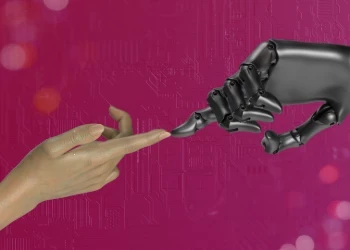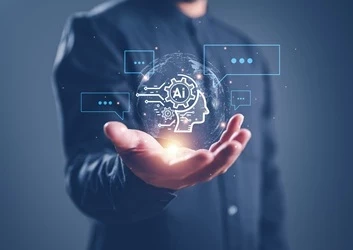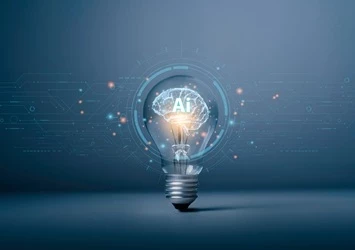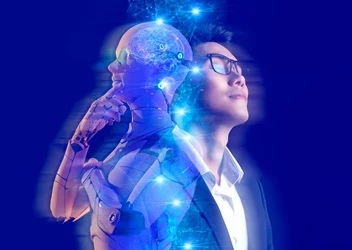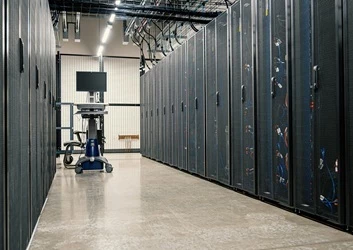
What is Artificial Intelligence (AI)?
Artificial Intelligence the simulation of human intelligence by machines and/or computer systems. However, the goal of AI is not to recreate the human psyche per se, but to use human reasoning as a guide to building better products, services, and automations.
What’s the Difference Between AI and Machine Learning (ML)?
Though Artificial Intelligence and Machine Learning (ML) are often used interchangeably, ML is actually a branch of AI that involves building algorithms capable of not only analyzing high volumes of data, but also continuously “learning” from the experience to deliver better, more accurate predictions and determinations over time. To accomplish this, ML leverages adaptive computer systems known as neural networks or deep learning that, using a system of interconnected nodes, mimic the human brain.
Generally speaking, ML can be split into two main categories based on “learning” style: supervised learning and unsupervised learning. With supervised learning, ML systems are exposed to large amounts of properly labeled data from day one to “train” them to identify a predetermined set of relationships or associations. On the other hand, unsupervised learning seeks to uncover potentially unknown patterns in data. Therefore, from the very beginning, the ML only looks at un-labeled data and is tasked with identifying patterns, similarities, anomalies, etc. on its own, without human guidance.
What is Natural Language Processing (NLP)?
Natural Language Processing (NLP) is the use of intelligent systems such as AI to analyze, interpret and manipulate human language. Using NLP, computers can perform a myriad of tasks ranging from translation to sentiment analysis to speech recognition. In fact, NLP can be found in many, commonly used applications such as chatbots, spam filters, and voice assistants (i.e. Alexa, Siri).
Similar to machine learning, NLP works to identify language patterns in 2 different ways: classification and clustering. Classification involves assigning text a specific, pre-defined label, or category based on its content (think spam filters). Clustering, on the other hand, are essentially unsupervised learning algorithms that group similar data, text or documents together. Instead of “learning” the language as a human would, clustering algorithms simply establish statistical associations between inputs and the categories.
Over the past decade or so, we’ve made huge strides in advancing NLP systems both in terms of its ability to process as well generate text. In fact, at this point, the most advanced question answering algorithm could pass the infamous Turing test. Found in chatbots, question answering technology analyzes and answers basic questions posed in natural language.
Speech & AI
Speech to text technology converts audio data (i.e. the spoken word) into text and is often used to assist individuals who are hearing or physically impaired as well as businesses looking to transcribe phone calls, speeches, videos, etc. On the other hand, text to speech, as its name suggests, refers to the conversion of the written word into audio. To ensure accuracy and, in the case of text to speech, high production value, these tools analyze and learn from massive volumes of human speech samples using ML. Closely related is speech recognition, a system that collects, interprets and responds to spoken commands or inquiries.
What are Expert Systems?
Potentially one of the most consequential applications of AI, expert systems leverage knowledge-based systems to solve complex decision-making problems that would traditionally require human intelligence. For example, PXDES is an expert system used to predict the degree and type of lung cancer.
Though expert systems have the potential to transform almost every sector imaginable, from city planning to financial services to air traffic control, they do have their limitations. Lacking both self and big picture, situational awareness, expert systems really only excel at performing certain distinct operational and analytical tasks. Their true promise lies in their ability to dramatically reduce workloads and augment human intelligence vs. replace it.
AI Planning, Scheduling & Optimization
AI planning tools breakdown complex objectives into a step-by-step, procedural course of action. The aim to ensure successful goal completion while optimizing overall performance measures. Whereas AI planning determines the activity, AI scheduling, on the other hand, determines the timing and order of tasks.
Robotics vs. AI
While AI aims to simulate human reasoning, robotics, as a science, seeks to replicate human actions. Using complex sensorimotor functions, robotics are able to adapt to their environment in real time. In fact, these days, robotics are often found in manufacturing settings assembling, packaging and organizing all kinds of products. Collaborative robots (a.k.a. cobots) are designed to work alongside human co-workers, often performing tasks that are too dangerous, dirty or boring for their human counterparts. Though they may not possess human-like intelligence, so can learn decision making by making an association between an action and a desired result.
What is Computer Vision?
Computer vision is essentially image recognition – the task of analyzing and learning from high values of visual data such as photographs or video. A core component of many IoT applications, computer vision uses cameras and other sensors to collect and classify visual data.
Furthermore, when camera vision and deep learning are combined, we get machine vision, which utilizes visual data to guide robot behavior. In other words, machine vision digitizes the image, processes the data it contains and then takes some kind of action. Facial recognition technology, for examples, falls under the machine vision umbrella.













